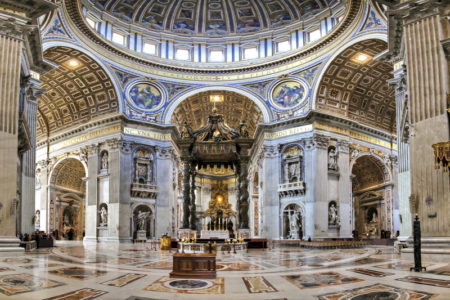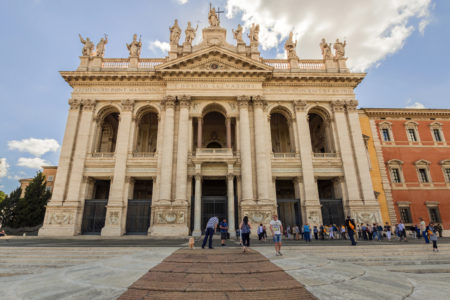
Background on Basilicas
While somewhat familiar to Catholics, the term Basilica originally referred to a specific function and style of building in use during the time of the Roman Empire. A Basilica was a public building used by the Emperor or Judges for major events of noble import or significance. The structure was usually distinguished by columns, a long center aisle, and an apse within the building. It was into the apse that the Emperor or Judge would be seated.
As Christianity became the official religion of the Roman Empire, Basilicas were converted into churches, with the Altar and Tabernacle of Our Lord, Jesus Christ substantially present in the apse, the place once occupied by the Emperor. The Basilica thus became the “Royal House” that fulfilled the architectural and canonical functions that raise it to a place of honor and privilege.
Two Types of Basilicas
There are two types of basilicas – Major Basilicas and Minor Basilicas. First among the Major Basilicas is the Lateran Basilica of Saint John, which is the Pontifical Cathedral of the Holy Father as the Bishop of Rome.
There are Four Major Basilica’s in Rome: the Lateran Basilica of Saint John, the Vatican Basilica of Saint Peter, Saint Mary Major, Saint Paul-Outside-the-Walls, Saint Lawrence Outside-the-Walls, Saint Sebastian, and the Basilica of the Holy Cross of Jerusalem. Outside of the Eternal City, the Basilica of Saint Francis in Assisi and the Basilica of the Holy Sepulchre in Jerusalem are also designated Major Basilicas.
Minor Basilicas are those churches throughout the Christendom that have been given a special designation by the Holy Father. Reasons for bestowing this designation may be granted for architectural beauty, historical significance, liturgical renown, or for any combination of these attributes. A Minor Basilica shares a special relationship with the See of Rome and with the Holy Father. Various privileges and obligations of the Minor Basilica highlight this important attachment to the Holy See and the Supreme Pontiff.
